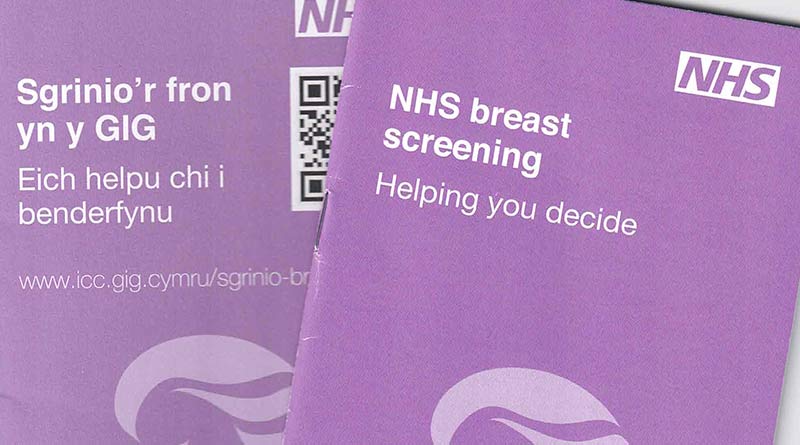Breast cancer – to screen or not to screen – Part 1

Executive summary
* This is the first of a two part note trying to answer the question – breast cancer – to screen or not to screen?
* The research was prompted by an invitation to screening that I received. The accompanying booklet reported the key trade off as “for every 1 woman who has her life saved from breast cancer, about 3 women are diagnosed with a cancer that would never have become life threatening.”
* As no lives are going to be saved (we're all going to die), I wanted to know by how much might the 1 woman 'saved' have her life extended and by how much might the 3 women harmed have their life shortened. How many women would be screened and not saved or harmed?
* I queried the life extension assumptions with Breast Screening Wales, and I was sent a link to a Sir Michael Marmot report from 2013 to help with my query.
* I knew that Dr Peter Gøtzsche had been writing about this topic since 1989 and he had authored five Cochrane reviews on breast screening, including one published within a couple of days of the Marmot report. I wondered why the Marmot report had been commissioned.
* This note examines the Marmot and Gøtzsche reports of 2013. They found the same trials. They agreed on the data extraction and the relative risk ratios. They disagreed on the trials that were robust enough to be included in a pooling together of trials.
* Marmot included all trials, and this resulted in a relative risk reduction of 20% in breast cancer mortality from screening. Gøtzsche included only the robust trials, and this resulted in a non-significant result. Marmot thus concluded that there was a benefit of screening (before overdiagnosis and other harms were taken into account). Gøtzsche concluded that there was likely no benefit and thus only harm.
* The harms are serious – unnecessary mastectomies, radiation and/or chemotherapy on women who didn't need any treatment. The question to screen or not to screen is thus a very important one to examine.
The rest of this article is available to site subscribers, who get access to all articles plus a weekly newsletter.
To continue reading, please login below or sign up for a subscription. Thank you.




